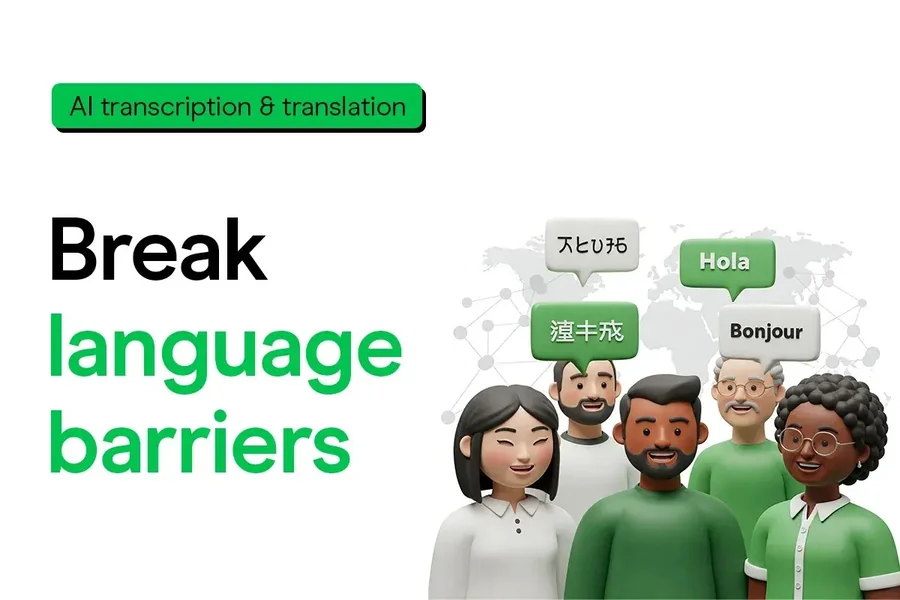Introduction
In an increasingly globalized world, networking is one of the most powerful ways people build relationships, discover opportunities, and spark collaboration. But language barriers still prevent many attendees from fully participating. This is where Live Translation for Events becomes transformative — it levels the playing field, letting people connect authentically regardless of the language they speak.
In this article, we’ll unpack how live translation supports inclusive networking sessions, practical strategies for organizers, technology choices, and measurable outcomes you can expect.
Why Networking Needs Intentional Inclusion
Networking sessions are high-value moments: introductions, exchanges of business cards, quick problem-solving, and relationship building all happen in short windows. When even a fraction of attendees can’t follow introductions or small talk, the event’s value drops — not only for them, but for everyone.
Inclusion here isn’t simply a benevolent add-on: it’s a driver of richer conversations, broader perspectives, and better business outcomes.
How Live Translation Removes Barriers
- Immediate comprehension – Real-time interpretation or captioning lets an attendee follow conversations as they happen — no waiting, no guesswork.
- Psychological safety – When participants know they’ll be understood, they’re more likely to introduce themselves, ask questions, or approach strangers.
- Social parity – Translating networking informalities like icebreakers or small-group discussions prevents entire cliques from forming around a single language.
- Greater reach and diversity – Removing language as a gatekeeper draws participants from different geographies, industries, and cultural backgrounds — enhancing serendipity and innovation.
Formats of Live Translation That Work Well for Networking
- Simultaneous interpretation (human): Interpreters translate in real time through headsets or apps. Best for large sessions with structured networking moments.
- Consecutive interpretation (human): Useful for one-on-one introductions or small groups.
- Remote interpreting (VRI/RSI): Interpreters connect over audio/video platforms to serve multiple networking pods.
- AI-assisted speech-to-text (captions + machine translation): Fast and cost-effective for low-stakes contexts; pair with human review where nuance matters.
- Whispering or roving interpreters: Interpreters move between small groups to translate live conversations — ideal for cocktail hours or tables.
Practical Design Strategies for Inclusive Networking
- Language-aware registration – Ask registrants which languages they’re comfortable using and whether they’ll need live translation. Use that data to staff interpreters and schedule breakout groups.
- Language tables or zones – Create labeled zones where people who speak certain languages can gather, and ensure each zone has translation support to and from the main event language.
- Micro-intros with translation support – Use 30–60 second structured intros and provide live captions or interpretation so the room can follow each person’s pitch.
- Name badges with language tags – A simple icon or two-letter language code (e.g., EN, ES, HI, FR) helps attendees find people they can converse with directly.
- Host bilingual facilitators – Session moderators who can repeat key points in multiple languages encourage quieter attendees to jump in.
- Use technology thoughtfully – Provide a choice: headset-based simultaneous interpretation for some; an app or embedded captions for others. Let attendees choose their comfort level.
Tech + Human Mix: The Best Balance
Purely automated solutions are fast and scalable but can miss idioms, sarcasm, or culturally specific terms. Human interpreters bring nuance, but are costlier. The most inclusive events typically combine approaches: a human interpreter for headline conversations and AI captions for sidebar chatter or where budget limits human coverage. This blended approach reflects the essence of a luxury tech lifestyle, where innovation and human touch work together to deliver seamless, premium experiences.
Etiquette and Guidance for Attendees
- Speak in short sentences and pause for interpretation when possible.
- Avoid heavy slang during cross-language conversations.
- Use visual aids (slides, simple text) to reinforce spoken points.
- Be patient — allow interpreters to signal when they need clarification.
Measuring Success: KPIs to Track
- Participation rate among non-native speakers (pre vs. post-introduction).
- Number of cross-language connections made (measured via app exchanges or post-event surveys).
- Engagement duration in networking activities for translated vs. non-translated attendees.
- Net Promoter Score (NPS) segmented by language group.
These KPIs show whether translation is helping people not just understand, but connect.
Accessibility and Cultural Sensitivity
Live translation supports accessibility beyond languages: provide readable captions for deaf or hard-of-hearing attendees and available sign-language interpretation when requested.
Be mindful of cultural norms on directness, eye contact, or personal questions — train interpreters to flag culturally sensitive content discreetly to moderators.
Pre-Event Checklist for Inclusive Networking
Before the event
- Survey languages in registration.
- Book interpreters and tech for each active language.
- Prepare glossary of industry-specific terms for interpreters.
At the event
- Provide badges with language tags.
- Run a short demo showing how to access translation channels.
- Have roving staff who can help attendees with the app/headsets.
After the event
- Survey attendees on translation quality and networking results.
- Analyze contact-exchange data segmented by language.
Conclusion
Live Translation for Events is not just an accessibility feature — it’s a strategic investment in inclusion and richer networking. When organizers plan intentionally, choose the right tech-human mix, and measure outcomes, translation creates direct business and community value: more meaningful connections, a wider talent pool, and a reputation for inclusivity.

